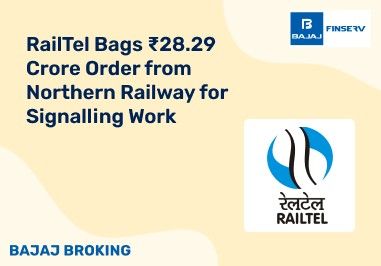Speed and efficiency are two pillars of modern life, as people and institutions want to be as fast and as efficient as possible. Hence, even in trading, speed and efficiency are required. Otherwise, it is highly likely that we may lose trading opportunities.
In this context, robo trading is revolutionizing the way people used to trade in securities. It uses algorithms to analyse data and execute trades in financial markets. More importantly, it makes decisions based on predefined rules. Hence, it takes human emotions out of the equation.
Robo trading helps execute trades extremely fast by minimizing the scope of errors. If you are about to open a trading account, you should go through this comprehensive blog on robo trading, as it takes a deep dive into this topic.
What is Robo Trading?
Robo trading (also known as algorithmic trading) means buying or selling securities on behalf of traders with the help of specialized software. This kind of trading uses the signals sent by a bot to execute stock market trades.
It uses advanced technologies like artificial intelligence (AI) and machine learning to find out complex trading patterns in financial markets that can help traders make money.
The best thing about robo trading is that it takes human emotions out of the picture. Often, traders make mistakes, as they lose grip on their emotions. This is where robo trading helps by reducing the possibility of such errors. Overall, it helps execute stock market transactions with much greater accuracy and in less time, thereby improving the efficiency of your trading. Having discussed what robo trading is, let us move on to other aspects related to it.
Types of Robo Trading
The most prominent types of robo trading are explained below:
Trend Following: In this type of trading, bots identify market trends for a trader by examining historical price data and initiate trades based on that.
Mean Reversion: Here, bots devise strategies based on the idea that over time prices revert to their historical averages. Bots find out oversold and overbought assets and initiate trades hoping that the prices of these assets will revert to their mean value.
High-Frequency Trading: As bots are quick to find price disparities, they initiate a high number of trades within an extremely short period of time (milliseconds). The idea is to make the most of opportunities that require fast execution.
Arbitrage: Bots capitalize on price discrepancies of the same securities across different markets under this strategy.
Also Read: What is Algorithmic Trading?
How Does Robo Trading Work?
Robo trading uses algorithms and executes trades automatically based on predefined rules. First, it collects real-time and historical market data. Then, the bots follow specific strategies (trend following, mean reversion, etc.). Before these strategies are actually used, they are backtested with the help of historical data.
After the results of backtesting are analysed, robo trading strategies are used to execute trades at a high speed. High-end technologies like AI and machine learning are used for this purpose. At the same time, strategies like stop-loss orders are used to minimize losses. The idea is to automate trading by removing errors that can be caused by human emotions.
Pros and Cons of Robo Trading
The main benefits of robo trading are explained below:
· Efficiency and Speed: Robo trading can execute trades in a tiny fraction of a second and removes the scope of human errors, thereby improving the efficiency and speed of trading.
· Cutting-edge Analysis: Backed by complex algorithms, robo trading can analyse vast amount of data in real-time and can provide compelling insights.
· Round-the-clock Trading: Robo trading can work 24/7. Hence, it can help you capitalize on trading opportunities in markets in different time-zones.
· Scalability: Robo trading strategies can be used for various levels of trading capital. This is because it is highly scalable.
The main disadvantages of robo trading are explained below:
· No human touch: If you need a human advisor for stock trading, then robo trading is not for you. As already explained, robo trading uses algorithms, which are in the form of complex software. Hence, if you use them, you will not have the benefit of a human advisor.
· Lack of personalization: Robo trading allows you to explain your investment goals. However, if you have other issues (e.g., your monthly salary intake is doubtful due to job losses in your industry), then robo trading cannot incorporate such concerns. Such issues are best dealt with by a human interface.
How Robo Trading can help in Intraday Trading
In simple intraday trading, you buy and sell a stock on the same day. In other words, whatever position you take, you square it off before the market closes for the day. However, it makes you prone to risks.
Let us say that you buy a stock for an intraday trade. Hence, you will have to sell it before the market closes today. However, its price can drop to any level, which makes it a risky proposition.
This is where robo trading helps you. When you place an intraday order, robo trading allows you to place two more orders. The objective of one of these orders is to ensure that you take profits at a specific price. And, the objective of the other order is to minimize your losses at a certain stop-loss level.
In other words, robo trading prevents you from keeping an eye on the market all the time. As stop-loss and take-profit levels are predefined, a trader knows how much profit or loss he is likely to make.
How is Robo Trading Useful?
Robo trading brings an automated and disciplined approach to investments. By using bots for trading, it ensures that all the decisions are taken based on predefined rules. Hence, there is no space for human emotions, which can wreak havoc to even well-designed plans.
Besides, robo trading can analyse vast chunks of data in a fraction of a second. Hence, it can help a trader capitalize on even minor discrepancies in patterns, which may not be evident to some of the best traders who do not use algorithms.
As explained under the previous subheading, robo trading can also help you limit your losses and set take-profit levels.
Conclusion
There is no denying that robo trading can be extremely helpful, as it automates trading and reduces the scope for errors. However, currently, it is permitted only for intraday trading. If you are an intraday trader, then robo trading can help you devise strategies that can minimize your risks and allow you to earn a certain level of profit.
Disclaimer: Investments in the securities market are subject to market risk, read all related documents carefully before investing.
This content is for educational purposes only. Securities quoted are exemplary and not recommendatory.
For All Disclaimers Click Here: https://bit.ly/3Tcsfuc













